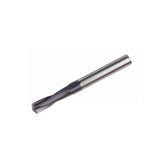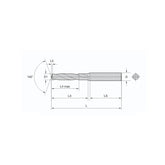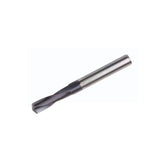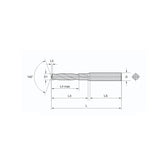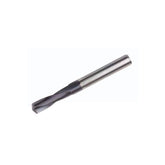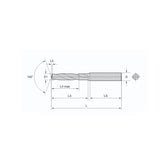Carbide vs. High-Speed Steel (HSS)
Carbide vs. High-Speed Steel (HSS): Why Two Types of Milling Cutter Materials?
Overview
Carbide and HSS are two common milling cutter materials (with alloy cutters being more prevalent). Material selection depends on multiple factors including workpiece material, required cutting speed, tool life requirements, cost considerations, and machine tool capabilities.

High-Speed Steel (HSS)
What is HSS?
A tool steel known for excellent hardness, toughness, and wear resistance balance. Widely used in manufacturing and metalworking.
HSS Types
- HSS 8% Cobalt (HSSE): Superior hardness/heat resistance with 8% cobalt content
- HSS 5% Cobalt (HSSE): Optimal balance of hardness and toughness
- Standard HSS: Basic cobalt-free grade (less common in modern machining)
Why Use HSS?
Best for:
- Machines with average stability
- Softer materials (mild steel, aluminum, brass)
- Cost-effective solutions
Advantages: High toughness, good wear resistance, easier resharpening
Limitations: Limited cutting speeds (~30-60 SFM for steel), unsuitable for hard materials
Carbide Tools
What is Carbide?
Tungsten-cobalt composite material offering superior hardness (90-92 HRA) compared to HSS (82-86 HRA). Preferred for CNC machining.
Carbide Types
- Micrograin Carbide (0.2-2μm): Enhanced toughness for interrupted cuts
- Ultrafine Carbide (0.1-0.5μm): High precision machining
- Nano-grain Carbide (<100nm): Extreme performance for advanced applications
Why Use Carbide?
Best for:
- Hard materials (stainless steel, titanium, cast iron)
- High-speed machining (3-5× HSS speeds)
- High-temperature operations
Advantages: Superior wear resistance, heat tolerance (up to 1000°C)
Limitations: Higher cost (2-5× HSS), brittleness requiring stable machining conditions
Key Comparison
| Parameter | HSS | Carbide |
|---|---|---|
| Hardness | 82-86 HRA | 90-92 HRA |
| Max Cutting Speed (Steel) | 30-60 SFM | 150-300 SFM |
| Impact Resistance | Excellent | Moderate |
| Typical Cost Ratio | 1× | 2-5× |
